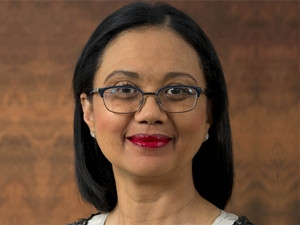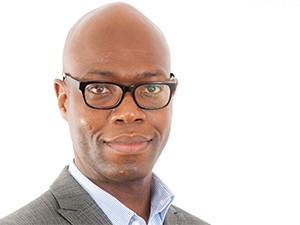
The Department of Energy's (DOE's) draft Integrated Energy Plan (IEP) and Integrated Resource Plan (IRP) announced yesterday have been met with mixed reactions.
While power utility Eskom and the renewables industry have largely welcomed the draft plans, the Organisation Undoing Tax Abuse (Outa) is not amused.
On 2 November, Cabinet approved the publication of the IEP and IRP for public comment and engagement.
In a statement yesterday, energy minister Tina Joemat-Pettersson said the purpose of the IEP is to provide a roadmap of the future energy landscape for SA which guides future energy infrastructure investments and policy development. "The development of the IEP is a continuous process and takes into account the changes in the macro-economic environment, developments in new technologies and changes in national priorities and imperatives, amongst other factors."
She added that since the promulgation of the IRP 2010-30, there has been a number of developments in the energy sector, the country and the region which necessitate that we review and update the plan.
"Some of the developments or changes include additional capacity that has come online, demand lower than envisaged in IRP 2010-30, drought in neighbouring countries experiencing resulting electricity shortage, reduced Eskom plant performance and changes in technology costs," said Joemat-Pettersson.
Right direction
The South African Photovoltaic Industry Association (SAPVIA) says it welcomes the release of the 2016 update of the long-awaited IRP.
The organisation says the updated IRP will give all South Africans the opportunity to interrogate the choices and cost assumptions used by the IRP planners to reach their conclusions regarding technology choices.
However, it notes the allocation of 17 600MW for solar PV in the 2016 IRP update is a step in the right direction, but falls short of the immense potential SA has to offer in this sector.

"Independent modelling, based on up-to-date figures from SA's Renewable Energy Independent Power Producer Procurement Programme bidding rounds, confirm that renewables are the best policy choice in order to meet the country's energy needs at the least cost, while still maintaining our carbon obligations," says SAPVIA in a statement.
It notes that evidence shows the least cost path for SA to achieve a sustainable, low carbon, high job creating energy mix is one that contains a large renewable energy component, supplemented with gas fire power. This renewables and gas scenario has been repeatedly seen in our BRICS partners and elsewhere globally, it adds.
In the current fiscally constrained environment, SAPVIA believes the additional cost of deviation from this "least cost scenario" should be made public to allow policy-makers to make informed value-for-money decisions. Any additional cost to the South African fiscus that will impact on critical social spending programmes should be debated, it points out.
Generous allocation
The wind energy sector has also applauded the release of the 2016 update of the IRP and the accompanying public consultation process that will enable all South Africans to engage electricity planners on investment choices - transparently and with a focus on least cost.
"It's common knowledge that the IRP has been outdated since 2013 and many of us have been feeding into the ongoing consultation process of this policy since 2010," says South African Wind Energy Association (SAWEA) CEO Brenda Martin.
"The generous allocation given to wind here will assist with increasing confidence in the market and ensures that we can see a clear picture of how our industry will develop as we make the transition toward decarbonisation.
"The IRP is based on a set of important assumptions which inform model outputs and which in turn determine the country's electricity investment decision-making to 2030. Two of the most important assumptions from SAWEA's perspective are demand and renewable energy costs. The assumptions made on these have a direct bearing on what the model selects for investment. The IRP2016 update clearly takes more recent data related to these assumptions into account, and in addition, extends the planning horizon to 2050," she continues.
The wind industry has extra cause to celebrate as the IRP draft lays out a clear path for significant future expansion, including an allocation of 37 400MW for wind energy development by 2050, says SAWEA.
Eskom says it supports the development of a long-term energy and electricity plan for SA in the form of an IRP and IEP plan.
"We will register as an interested and affected party and submit our comments on the plans through the formal process," says Matshela Koko, group executive for generation at Eskom.
The power utility says its current plans are closely aligned to a base case scenario that takes SA's carbon budget into consideration and annual constraints on bringing renewables into the grid. It adds that this scenario requires the first nuclear unit by 2026. To this end, Eskom has indicated it will go ahead with the request for proposal for nuclear by the end of December 2016 as all indications show 2026 is feasible to deliver the first unit.
"Should these assumptions not hold and another scenario comes into play in March 2017, we will change accordingly," says Koko.
Nuclear agenda
Meanwhile, Outa has reacted with "outrage and disappointment" to the content of the long-awaited IEP and IRP. It says the IRP has been six years in the making and four years late, and comes at a time when profound questions are being asked about state capture and corruption in the national utility.
"In our opinion, the entire process reeks of reverse engineering to try and accommodate the introduction of nuclear energy," says Ted Blom, Outa's portfolio director for energy. "A series of methodological decisions have been introduced, to keep a window open to justify a false need for nuclear power."
Outa points out that the first dubious decision in the chain was not to select a zero-base model. The rational approach would dictate that every IRP update is to run a lowest cost model, as was advised by the Ministerial Advisory Commission on Energy, it explains.
Had this been done, Outa says, the base case IRP model would have shown zero nuclear and the entire nuclear debate would have been over. Instead, ministerial determinations made until December 2015 were assumed to be cast in stone and the model was never asked whether we should be building nuclear or not, but rather when.
"This draft IRP for 2016 indicates that nuclear is not required before 2037, indicating that the nuclear debate should not be entertained for another eight years or so. Instead, in a stunning exhibition of how a deeply conflicted state-owned monopoly can manipulate government policy, the head of Eskom generation, Mr Matshela Koko, was inexplicably allowed to sit on a panel with the minister of energy and pronounce on the future energy mix of the country," Outa says.
"Moreover, Mr Koko proceeded to implicitly defy the outcome of the draft IRP 2016, by selecting the one scenario amongst many that possibly requires some nuclear by 2025. He has taken this option to justify his hasty plan for a nuclear rollout request for information in the next month, thereby keeping Eskom's nuclear pipedream alive."
Share